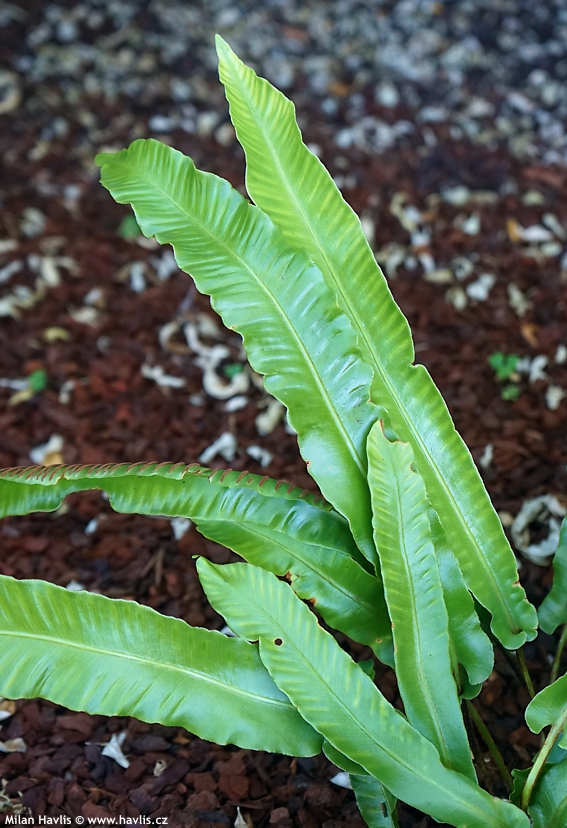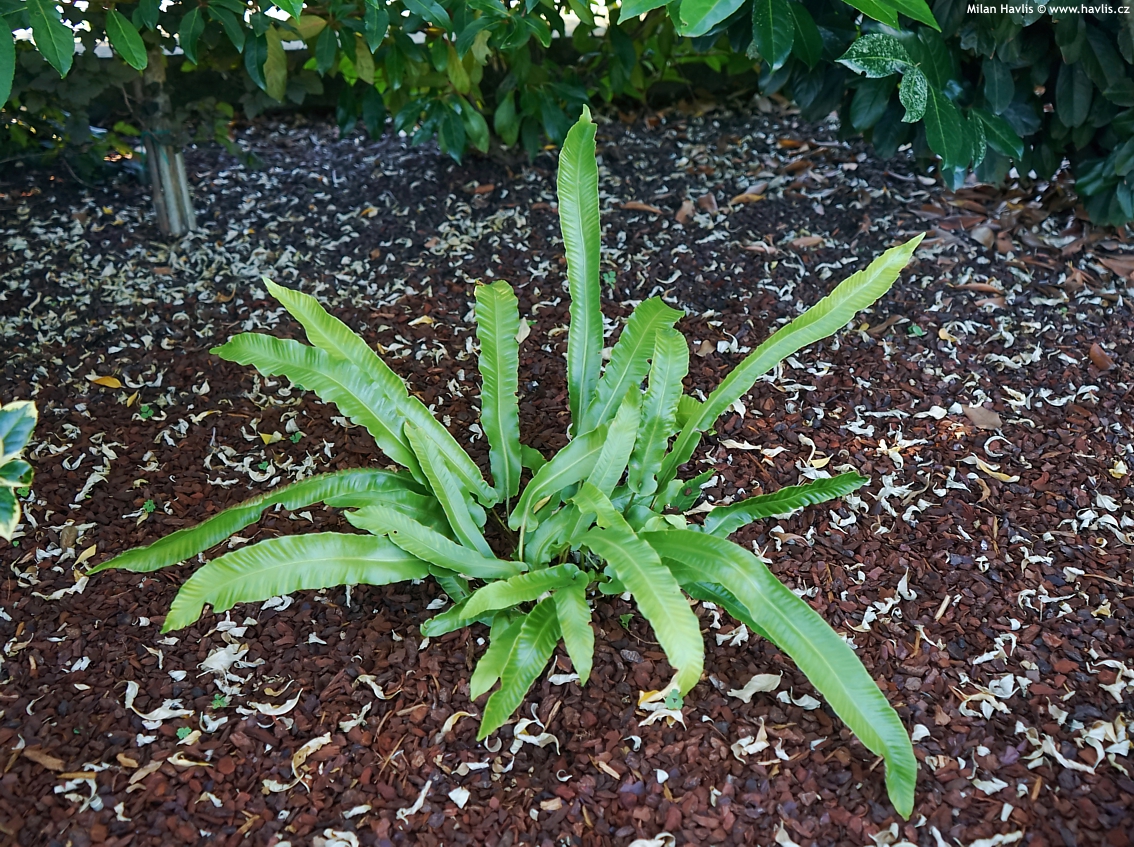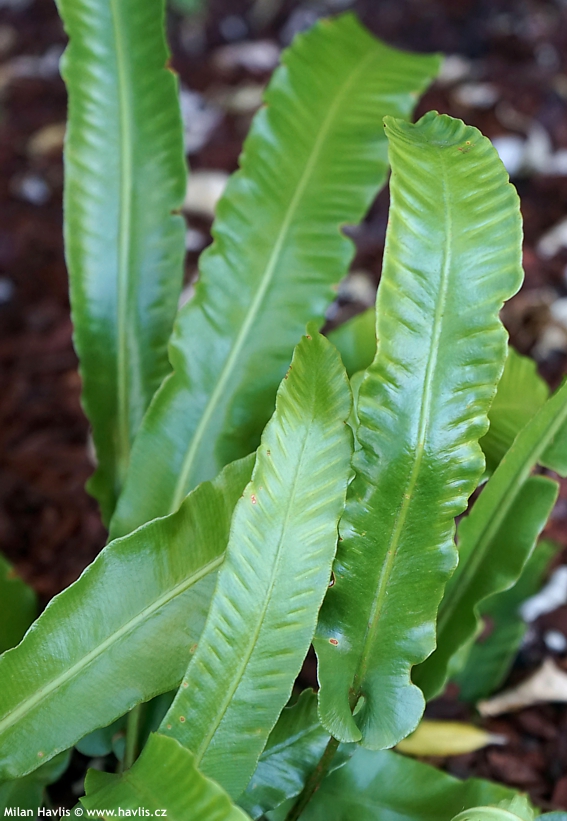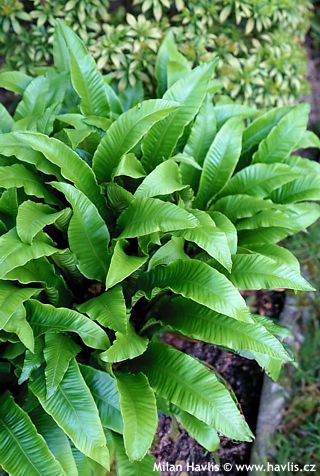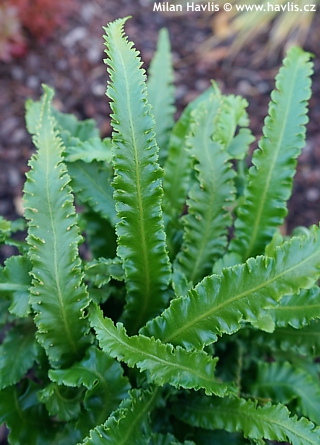Asplenium scolopendrium (syn. phyllitis s.) 'ANGUSTATUM' hart's tongue fern
size/type
low perennial,low perennial
usual height
0,3-0,4m
usual width
0,4-0,5m
leaves
evergreen broadleaf
colour of leaves
location
semi-shade to shade
soil type
neutral to alkaline
soil moisture requirements
evenly moist but well-drained
USDA zone (lowest)
5 (down to -29°C)
winter protection
for zone 5+6

for zone 7

categorized
Asplenium
Hart’s tongue fern is an attractive species with large, evergreen leaves. It was widespread in Europe, West Asia, and North America but in some locations including Czech Republic it is already listed among endangered species.Description of the plant:
Angustatum is a narrow-leaved variety of hart’s tongue fern. Its leaf blades are almost half the width of the species which makes them look longer. It is the only hardy fern with entire foliage, suitable for our C.E. climate though it bears close resemblance to its subtropical relatives. Its evergreen leaves are not divided into small, individual leaflets forming a showy frond as in case of other fern species, but make one wide, bright green, and glossy leaf. The species has smooth, slightly wavy margins while cultivars vary significantly. These leaves can take deep frost without damage, only during very cold spells they wilt and lie on the ground awaiting warmer weather when they straighten up again.It is cultivated in semi-shaded or shaded locations with moist but well-drained, cool soil of preferably alkaline pH (lime-based) but will even grow in slightly acidic soil. It needs deep soil rich in organic matter which may sound strange when you see it growing happily in a crevice of a rock, but you never know how deep or moist it is there. These ferns respond well to fertilizing: the more nutrients – the bigger leaves. Though they can withstand heavy frosts we suggest cutting off all leaves in spring to encourage new growths. Hardy to about -29 °C (USDA zone 5).
Last update 13-02-2010; 01-12-2021
QUICK PRICE OVERVIEW
CURRENTLY SOLD OUT
WANT TO TRY A SIMILAR PLANT?













